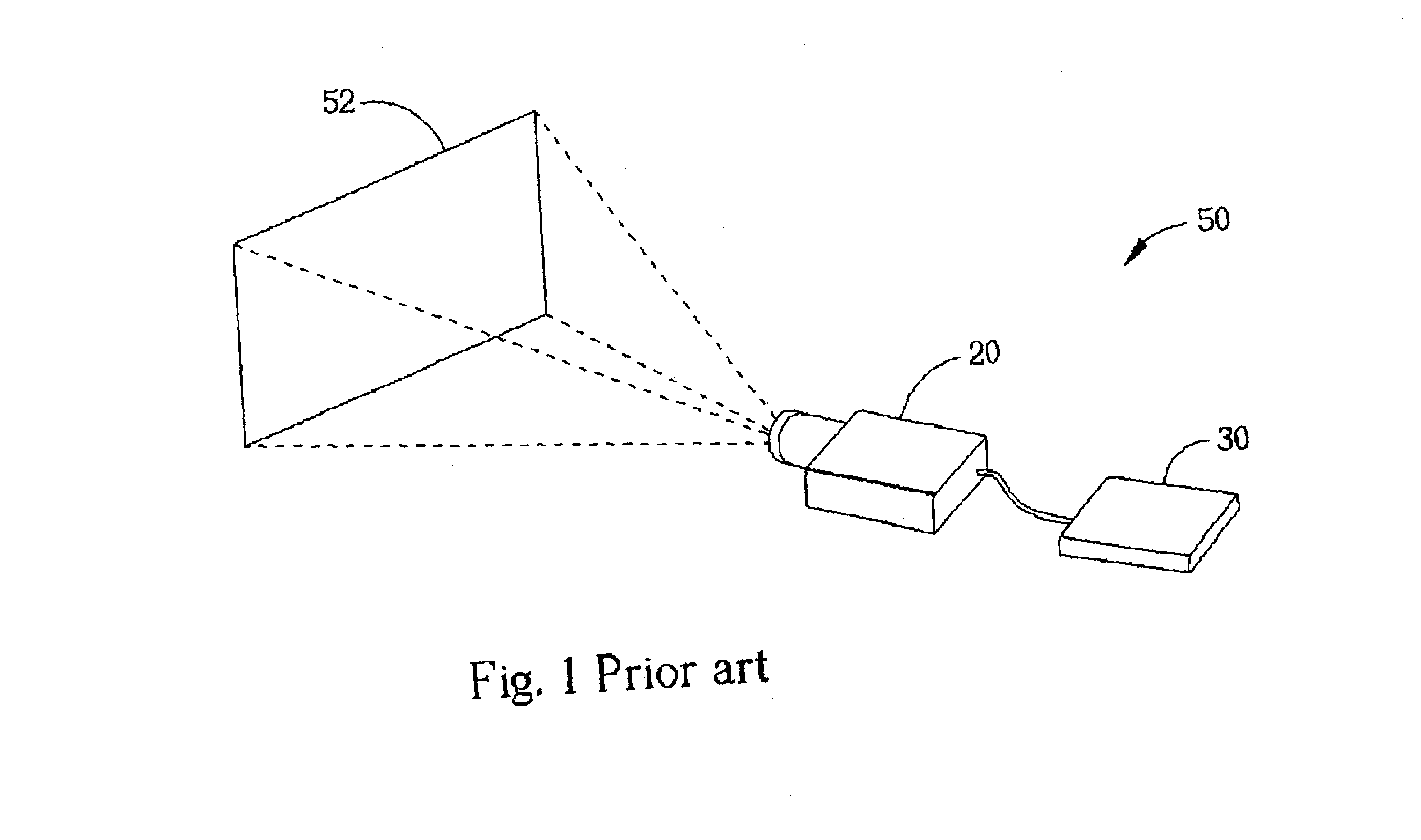Method for detecting moving objects by comparing video images
a technology of video images and moving objects, applied in the field of moving objects detection, can solve the problems of 50/b> incorrectly judging the global environmen
- Summary
- Abstract
- Description
- Claims
- Application Information
AI Technical Summary
Benefits of technology
Problems solved by technology
Method used
Image
Examples
first embodiment
[0027]Please refer to FIG. 7. FIG. 7 is a flowchart of a method according to the present invention. The method comprises:
[0028]Step 162: Start;
[0029]Step 164: Select a first image 124 and a second image 126 from the video image 122;
[0030]Step 166:
[0031]Separate the first image 124 and the second image 126 into a plurality of blocks 132;
[0032]Step 168:
[0033]Calculate an average value A(m,n) for each block 132 of the second image 126, each of the average values A(m,n) is equal to the average of the differences between the pixels 134 of one of the blocks 132 of the second image 126 and the pixels 134 of a corresponding block 132 of the first image 124;
[0034]Step 170:
[0035]Calculate a mean difference B between an average value of the pixels 134 of the first image 124 and an average value of the pixels 134 of the second image 126;
[0036]Step 172:
[0037]Calculate a difference V(m,n) between the average value A(m,n) and the mean difference B for each block 132 of the second image 126, and se...
second embodiment
[0063]Please refer to FIG. 11. FIG. 11 is a flowchart of a method according to the present invention. In this embodiment, the calculator 130 adopts the following steps to compare the first image 124 with the second image 126:
[0064]Step 262: Start;
[0065]Step 264: Select a first image 124 and a second image 126 from the video image 122;
[0066]Step 266:
[0067]Separate the first image 124 and the second image 126 into a plurality of blocks 132;
[0068]Step 268:
[0069]Calculate an average value A(m,n) for each block 132 of the second image 126, each of the average values A(m,n) is equal to the average of the differences between pixels 134 of one of the blocks 132 of the second image 126 and pixels 134 of a corresponding block 132 of the first image 124;
[0070]Step 270:
[0071]Select a predetermined percentage, i.e. 50%, of the blocks 132 of the second image 126, in which all of the average values A(m,n) of the selected blocks 132 are not greater than any average value A(m,n) of the un-selected b...
third embodiment
[0082]Please refer to FIG. 12. FIG. 12 is a flowchart of a method according to the present invention. In this embodiment, the calculator 130 adopts the following steps to compare the first image 124 with the second image 126:
[0083]Step 362: Start;
[0084]Step 364: Select a first image 124 and a second image 126 from the video image 122;
[0085]Step 366:
[0086]Separate the first image 124 and the second image 126 into a plurality of blocks 132;
[0087]Step 368:
[0088]Calculate an average value A(m,n) for each block 132 of the second image 126, each of the average values A(m,n) is equal to the average of the differences between pixels 134 of one of the blocks 132 of the second image 126 and pixels 134 of a corresponding block 132 of the first image 124;
[0089]Step 370:
[0090]Calculate the mean difference B between an average value of the pixels 134 of the first image 124 and an average value of the pixels 134 of the second image 126;
[0091]Step 372:
[0092]Calculate a difference mean value F that ...
PUM
 Login to View More
Login to View More Abstract
Description
Claims
Application Information
 Login to View More
Login to View More - R&D
- Intellectual Property
- Life Sciences
- Materials
- Tech Scout
- Unparalleled Data Quality
- Higher Quality Content
- 60% Fewer Hallucinations
Browse by: Latest US Patents, China's latest patents, Technical Efficacy Thesaurus, Application Domain, Technology Topic, Popular Technical Reports.
© 2025 PatSnap. All rights reserved.Legal|Privacy policy|Modern Slavery Act Transparency Statement|Sitemap|About US| Contact US: help@patsnap.com



